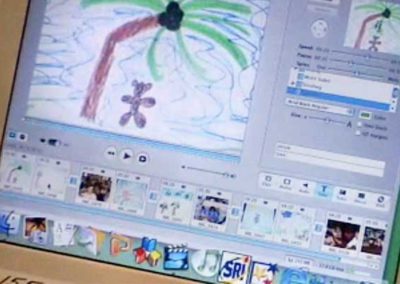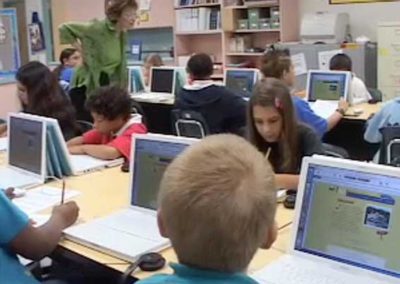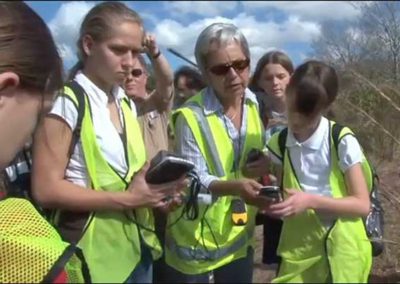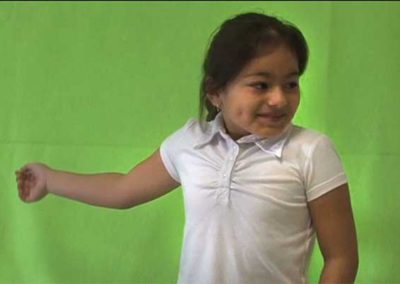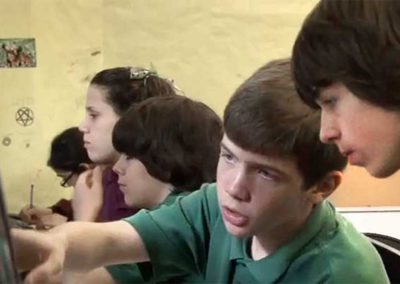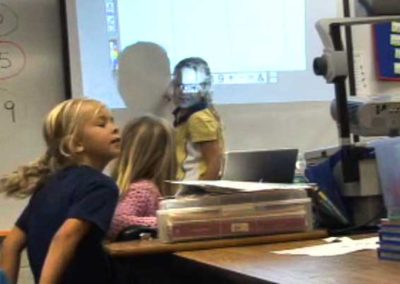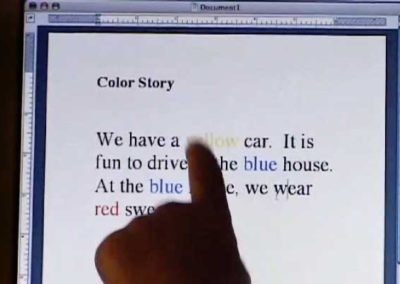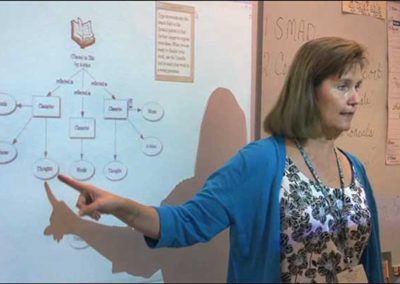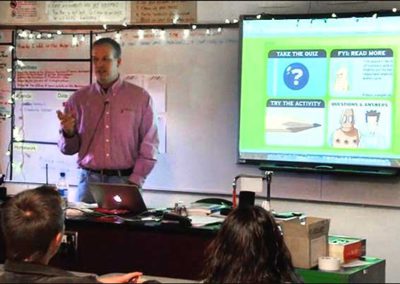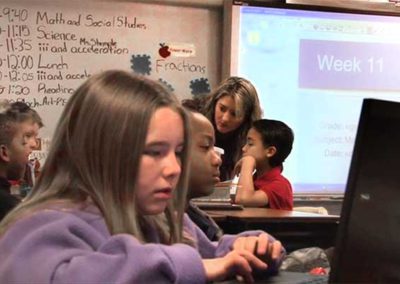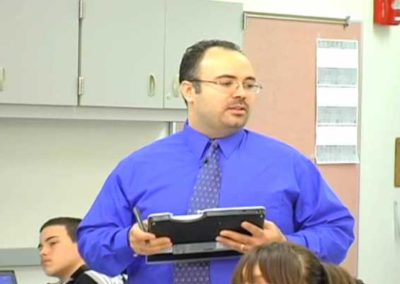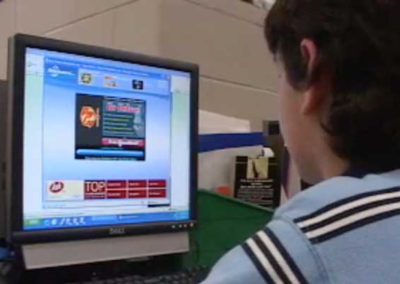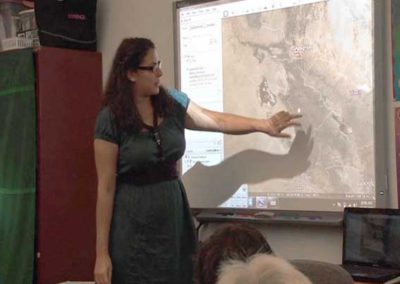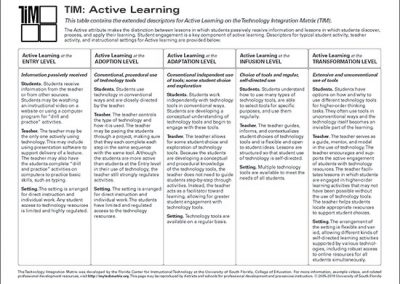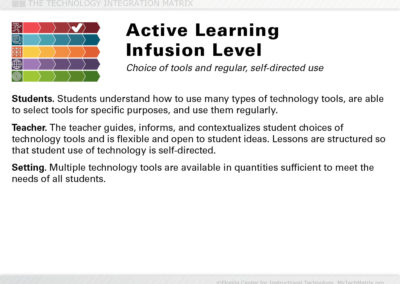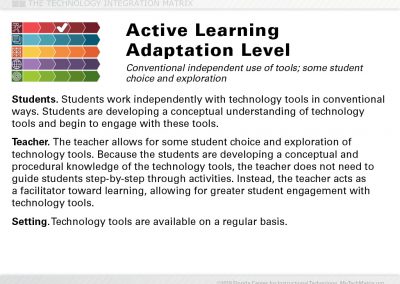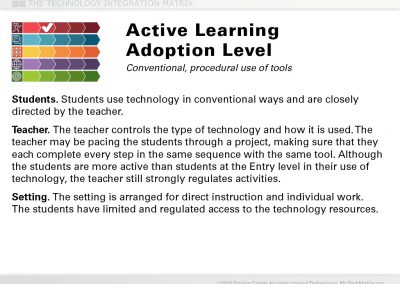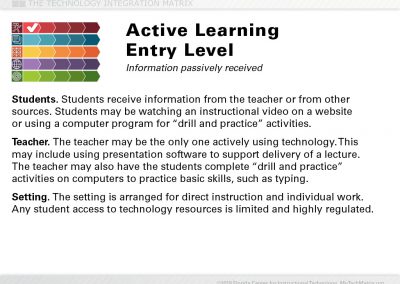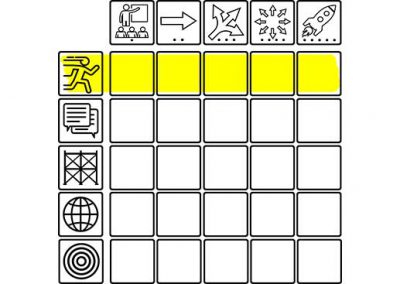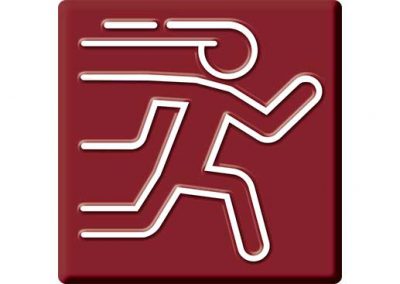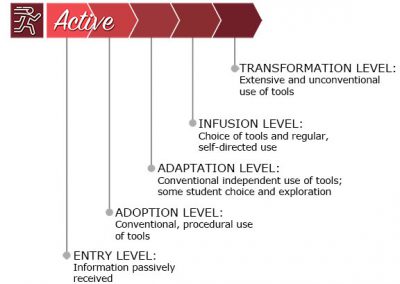Active Learning
Students are actively engaged in using technology as a tool rather than passively receiving information from the technology.
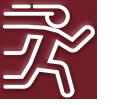 The Active characteristic makes the distinction between lessons in which students passively receive information and lessons in which students discover, process, and apply their learning. Student engagement is a key component of active learning.
The Active characteristic makes the distinction between lessons in which students passively receive information and lessons in which students discover, process, and apply their learning. Student engagement is a key component of active learning.
This page provides greater detail about the Active learning characteristic of the Technology Integration Matrix. To see the entire matrix or to locate other characteristics, return to the Matrix. Descriptors for typical teacher activity, student activity, and instructional settings for Active learning are provided below, along with links to all of the Active learning video lesson pages and additional resources.
Active Learning Descriptors for Each of the Five Levels
Entry Level
Information passively received
Students receive information from the teacher or from other sources. Students may be watching an instructional video on a website or using a computer program for “drill and practice” activities.
The teacher may be the only one actively using technology. This may include using presentation software to support delivery of a lecture. The teacher may also have the students complete “drill and practice” activities on computers to practice basic skills, such as typing.
The setting is arranged for direct instruction and individual work. Any student access to technology resources is limited and highly regulated.
Adoption Level
Conventional, procedural use of tools
Students use technology in conventional ways and are closely directed by the teacher.
The teacher controls the type of technology and how it is used. The teacher may be pacing the students through a project, making sure that they each complete every step in the same sequence with the same tool. Although the students are more active than students at the Entry level in their use of technology, the teacher still strongly regulates activities.
The setting is arranged for direct instruction and individual work. The students have limited and regulated access to the technology resources.
Adaptation Level
Conventional independent use of tools; some student choice and exploration
Students work independently with technology tools in conventional ways. Students are developing a conceptual understanding of technology tools and begin to engage with these tools.
The teacher allows for some student choice and exploration of technology tools. Because the students are developing a conceptual and procedural knowledge of the technology tools, the teacher does not need to guide students step-by-step through activities. Instead, the teacher acts as a facilitator toward learning, allowing for greater student engagement with technology tools.
Technology tools are available on a regular basis.
Infusion Level
Choice of tools and regular, self-directed use
Students understand how to use many types of technology tools, are able to select tools for specific purposes, and use them regularly.
The teacher guides, informs, and contextualizes student choices of technology tools and is flexible and open to student ideas. Lessons are structured so that student use of technology is self-directed.
Multiple technology tools are available to meet the needs of all students.
Transformation Level
Extensive and unconventional use of tools
Students have options on how and why to use different technology tools for higher-order thinking tasks. They often use tools in unconventional ways and the technology itself becomes an invisible part of the learning.
The teacher serves as a guide, mentor, and model in the use of technology. The teacher encourages and supports the active engagement of students with technology resources. The teacher facilitates lessons in which students are engaged in higher-order learning activities that may not have been possible without the use of technology tools. The teacher helps students locate appropriate resources to support student choices.
The arrangement of the setting is flexible and varied, allowing different kinds of self-directed learning activities supported by various technologies, including robust access to online resources for all students simultaneously.
View or print table as PDF:
US Letter
International A4
Active Learning: Engaging Students’ Minds
The Active characteristic makes the distinction between lessons in which students passively receive information and lessons in which students discover, process, and apply their learning. There is a night-and-day difference between…. (Continue reading)
Active Learning Videos: Transformation Level
Active Learning Videos: Infusion Level
Active Learning Videos: Adaptation Level
Active Learning Videos: Adoption Level
Active Learning Videos: Entry Level


